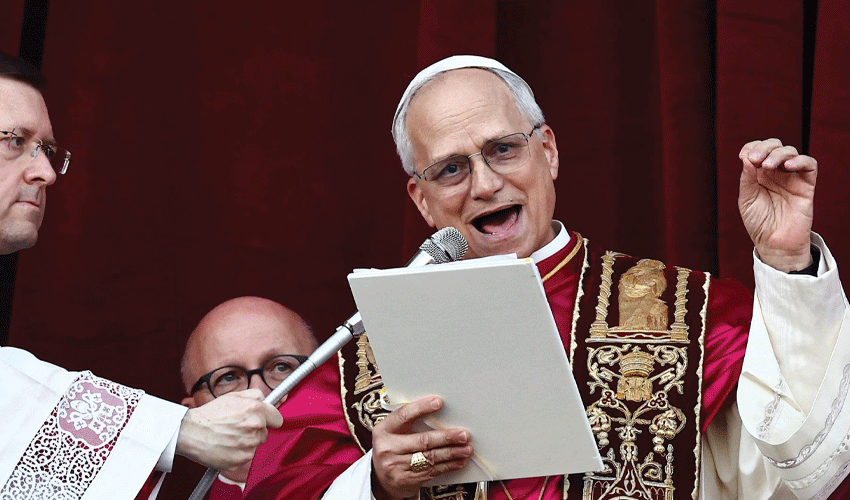From his first moments on the balcony of St. Peter’s Basilica, the newly elected Pope Leo XIV offered the world three significant signals about the nature of his papacy — his chosen name, his first public words, and his attire.
The former U.S. Cardinal Robert Prevost was elected by the College of Cardinals on Thursday, marking the second day of the conclave following the death of Pope Francis last month. Francis had suffered from double pneumonia before succumbing to a stroke a day after delivering his final Easter blessing.
Leo XIV becomes the first pope from the United States, though he also holds Peruvian citizenship. He spent decades in Peru as a missionary, a fact many Vatican observers say has shaped his pastoral and social outlook.
Name Steeped in History
The first indication of Pope Leo’s intended direction was his choice of name. In papal tradition, the adoption of a name is often a symbolic gesture, offering insight into the values and mission the new pontiff intends to uphold.
Pope Francis, elected in 2013, chose the name to honor St. Francis of Assisi, known for his dedication to poverty, humility, and peace.
By choosing the name Leo XIV, the new pontiff appears to draw inspiration from Pope Leo XIII, who led the Church from 1878 to 1903 and is best remembered for championing workers’ rights and advancing the Church’s social doctrine. His 1891 encyclical Rerum Novarum called for just wages, humane working conditions, and the right to form labor unions.
“By picking the name Leo XIV, he shows he is committed to the social teaching of the Church,” said Rev. Thomas Reese, a Jesuit commentator and longtime Vatican analyst.
Message of Peace
The second key moment came in Pope Leo’s opening remarks, where he chose to speak in Italian, offering a message that resonated strongly with current global concerns.
“La pace sia con tutti voi!” (“Peace be with you!”), he declared to the thousands gathered in the square and millions watching worldwide.
The words, though standard in Catholic liturgy, struck a deeper chord amid ongoing conflicts in Ukraine, Gaza, Sudan, and other regions. The cardinals, in a joint statement ahead of the conclave, had expressed deep concern over these wars, urging leaders to pursue peace.
Pope Leo expanded on the theme, calling for “a disarmed peace and a disarming peace,” which he described as “humble and persevering.”
In a touching tribute, he acknowledged the legacy of his predecessor. “We still have in our ears that weak, but always courageous voice of Pope Francis,” he said, before repeating a version of Francis’s last public blessing: “God loves us, God loves everyone, and evil will not prevail. We are in the hands of God.”
Nod to Tradition
The third signal came in visual form — Pope Leo’s choice of attire. While Francis had famously rejected the ornate trappings of the papacy from day one, opting for a simple white cassock, Leo donned a traditional red mozzetta over his papal whites.
Though subtle, the choice is being interpreted as a sign of a more traditional approach to the papacy — one that may blend Francis’s pastoral focus with an embrace of certain Vatican traditions.
Vatican insiders say the balance may appeal to both progressive and conservative factions within the Church.
Bridge Between Eras
Despite these differences, Leo XIV made clear that he sees himself not as a break from Pope Francis, but as a continuation — with a distinct identity.
“He is not Francis II, but Leo XIV,” said a senior Vatican official on condition of anonymity. “And that matters. He is shaping a new chapter, not a sequel.”
As the 1.4-billion-strong Catholic Church looks to the future under Leo XIV’s leadership, the early signs suggest a pontificate rooted in social justice, global peace, and respectful tradition — a complex blend that may define his time on the throne of St. Peter.



